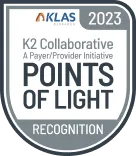Webinar
/
Round Table 154: 4th Quarter Selective Coding Clinic Review
Date
Time
January 17, 2023
10:00 am
EST
Meet the speakers
About the webinar
AHA’s Coding Clinic remains an invaluable coding reference mainstay. See the most critical topics in Q4 2022 Coding Clinic publication.
Achieve your boldest ambitions
Explore how Datavant can be your health data logistics partner.
Contact us



.svg)









